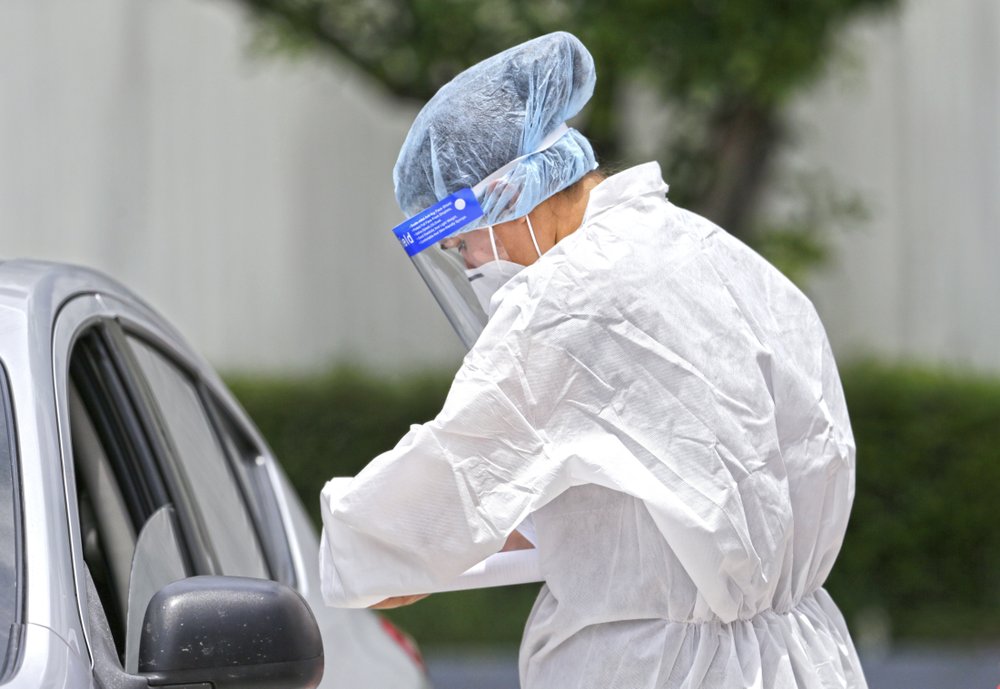
South Florida’s tri-county area saw its daily positivity rate tick up significantly after previous days had shown signs the virus’s spread may be slowing in the region.
Testing reported as part of Tuesday’s Department of Health report showed 18.8% of testing coming back positive across Palm Beach, Broward and Miami-Dade counties.
That’s the highest number for South Florida since last Thursday’s report, which showed a whopping 22.8% of tests throughout the tri-county area coming back positive.
Exclude that eye-popping number from last week, and Tuesday’s report shows the highest positivity rate for South Florida since the recent resurgence of the virus began.
The region added nearly 3,900 new cases in Tuesday’s report, which covers data from Monday to Tuesday morning. That’s down significantly from the two days prior. Sunday’s report saw more than 6,500 new cases in the region, while Monday’s data confirmed more than 5,500 additional cases.
Though those raw numbers were record-breaking, they were largely driven by a surge in testing. The share of tests which came back positive were among the lowest for the region in the previous two weeks during those Sunday and Monday reports.
It should also be noted that increases in testing will typically produce lower positivity rates. The people most likely to get tested first are those experiencing the worst symptoms. As testing numbers rise, it can be because healthier individuals are simply seeking the test as a precaution. It’s not clear whether that’s what drove the region’s rate down in prior days.
Regardless, Tuesday’s report was a return to the new normal for the region, which has served as the epicenter of the outbreak in Florida. In Palm Beach and Broward counties, the positivity rate hovered around 16%. In Miami-Dade, that number jumped to 22.1%.
Miami-Dade County has seen a sustained positivity rate above 20%. More than one in five tests conducted from June 28-July 13 have come back positive. That’s a span of more than two weeks.
Experts warn sustained levels above 10% can be dangerous signs of the virus’s spread. Miami-Dade has doubled that number.
“This is the toughest part of the epidemic in our state,” DeSantis said of the county at a Monday evening news conference.
He’ll be stopping in Miami-Dade again Tuesday for a roundtable with several of the county’s mayors.
The region’s death rate also continued to drop, though at a much slower pace than had been typical in recent weeks. Florida saw a record number of deaths in Tuesday’s report.
The median age of cases continues to be in the high 30s and low 40s. That number has been fairly consistent over the past two weeks in Broward and Miami-Dade counties, though has trended slightly upward in Palm Beach County.
The week-to-week numbers over the previous two weeks do not appear as dire as the week-to-week numbers throughout June. That month saw a sharp rise in both the average number of new daily cases and the positivity rate.
While the daily case average has continued to climb over the previous two weeks in each major South Florida County, the positivity rate has been fairly stable, even dropping in Palm Beach County. Several more reports like Tuesday’s, however, could reverse that encouraging trend.
Here are the weekly numbers for the previous three weeks throughout the South Florida tri-county area:
Miami-Dade
— June 23-29: 1,415 new cases per day, 15.9% positivity rate
— June 30-July 6: 2,026 new cases per day, 20% positivity rate
— July 7-13: 2,676 new cases per day, 20.4% positivity rate
Broward
— June 23-29: 548 new cases per day, 10.5% positivity rate
— June 30-July 6: 987 new cases per day, 14.9% positivity rate
— July 7-13: 1,464 new cases per day, 15.2% positivity rate
Palm Beach
— June 23-29: 423 new cases per day, 11% positivity rate
— June 30-July 6: 493 new cases per day, 13.6% positivity rate
— July 7-13: 659 new cases per day, 12.2% positivity rate
___
Editor’s note on methodology: The Florida Department of Health releases new data every morning around 10:45 a.m. The total number reported in those daily reports include the previous day’s totals as well as the most up to date data as of about 9:30 a.m.
Florida Politics uses the report-over-report increase to document the number of new cases each day because it represents the most up-to-date data available. Some of the more specific data, including positivity rates and demographics, considers a different data set that includes only cases reported the previous day.
This is important to note because the DOH report lists different daily totals than our methodology to show day-over-day trends. Their numbers do not include non-residents who tested positive in the state and they only include single-day data, therefore some data in the DOH report may appear lower than what we report.
Our methodology was established based on careful consideration among our editorial staff to capture both the most recent and accurate trends.
